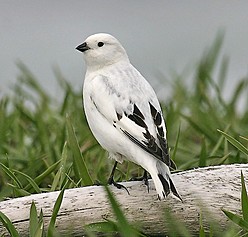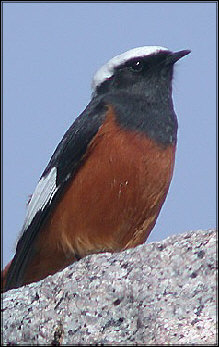Anyone who read my previous post on Johann Anton Güldenstädt and his 18th century trip to the Caucaus mountains, at the end of the recent Russian – Georgian War over South Ossetia, would have guessed two things: I am a fan of nature and where politics and nature meet it gives me great incentive to blog.
With all the recent fuss over Sarah Palin, the Governor of Alaska, and now Republican Vice President candidate; that’s all the excuse I need!
Particularly when Sarah Palin is backing destruction of one of the most spectular wildlife areas in North America and that site is intimately linked to a little known naturalist but one of my biggest heroes!
Charles McKay, born in Appleton, Wisconsin in 1855, was the son of a Scottish farmer. He studied Science under David Starr Jordan; a naturalist particularly noted for the study of fish and also a famous peace campaigner he became a president of Indiana University then Stanford University.
When Charles left university he joined the U.S. Army. He was sent to Alaska by Spencer Fullerton Baird as a signal officer. Baird was another naturalist and often used fellow naturalists in the military, sending them to remote places to study the wildlife, whilst carrying out their military duties.
McKay was sent to Bristol Bay in Alaska. He discovered a beautiful, rare and new species of bunting there, now named McKay’s Bunting in his honour.

There are only about 6000 McKay’s buntings in the world. They only breed on two islands in the Bering Sea; St. Matthew Island and Hall island. They winter on the coast of Alaska, and can be found in Bristol Bay.
Breeding on two Arctic islands McKay’s buntings could be threatened by global warming as the Bering Sea rises due to melting icebergs and the icecap.
Bristol Bay, the very area where Charles McKay first discovered these buntings, is now under threat from a proposed Gold and Copper mine that would be sited in the area called Pebble Mine.
Bristol Bay is also the site of one of the world’s biggest salmon fisheries. This is also at risk from the proposed mine.
And its this very place that Sarah Palin wants to see the Pebble Mine located.
Its an indication of how right-wing Governor Palin is when you realise that even the American Hunting Organisations are against the proposed mine.
The most worrying thing is that both Sarah Palin and Barack Obama were against Alaska’s Proposition 4 which would have prevented mining companies dumping their chemicals into the state water supply and rivers; it may have even prevented the Pebble Mine being built. It narrowly was defeated recently giving the mining companies a huge boost.
Indeed, it seems Sarah Palin even broke the law to campaign against Proposition 4.
The door is now open for the Pebble Mine.
Sarah Palin won’t stop it. Will Barack Obama?




















 Posted by clinoch
Posted by clinoch 


